By Tom Anderson
Right now, the eyes of the world are on Khan al Ahmar, the Palestinian village that has been resisting demolition by the Israeli state for months. Both the EU and the International Criminal Court have condemned the planned expulsion of the residents as illegal. But Khan al Ahmar is by no means the only Palestinian community facing destruction.
The Israeli state demolishes between 450 and a thousand Palestinian homes and structures every year. According to the UN, Israel demolished 1094 Palestinian structures in 2016, and 425 in 2017.
The majority of them are in a handful of threatened areas, which are under attack because of their strategic importance to the Israeli occupation. These areas are occupied East Jerusalem, the villages around Jerusalem stretching toward Jericho (known as the E1 area), the Jordan Valley and the South Hebron Hills.
We visited the village of At Tuwani, in the South Hebron Hills, to talk about the resistance to home demolitions in the area. At Tuwani is the only Palestinian village in the immediate area where residents have permission to build new structures in a limited area. Over 30 nearby villages, including Khirbet al-Halawah, Susiya, Musaffer Yatta Al Mufaqara, Um al Kheir and Tuba are subjected to constant demolitions and orders to stop work by the Israeli Civil Administration. These villages are also prevented from being connected to a water or power supply.
One key way that the Israeli authorities prevent Palestinians from building in these communities is by refusing to grant them ‘master plans’, or maps of permitted construction which would allow them to build structures legally. The Civil Administration claims that it is basing its position on the British mandate’s 1942 ‘master plan’ for the area, which, they argue, earmarked it as agricultural land (see here for more information).
The Civil Administration’s policies are designed to allow the expansion of Israeli colonies in the area, including the colonial outposts of Northwest Susiya, Avigayil, Mitzpe Yair, Havat Ma’on, Nof Nesher, Asael and Sansana.
We spoke to activists from an anti-occupation youth group called Youth of Samud (‘Samud’ means ‘steadfast’), as well as several other Palestinian activists and international volunteers from Operation Dove, an Italian peace group who are providing an international presence in the area at the request of local Palestinians.
We were told that, even in At Tuwani where a ‘master plan’ has been granted for a small area, a kindergarten and water well at the edge of the permitted area have received a ‘stop work’ order and are threatened with demolition.
Demolitions affect ‘our whole daily life’
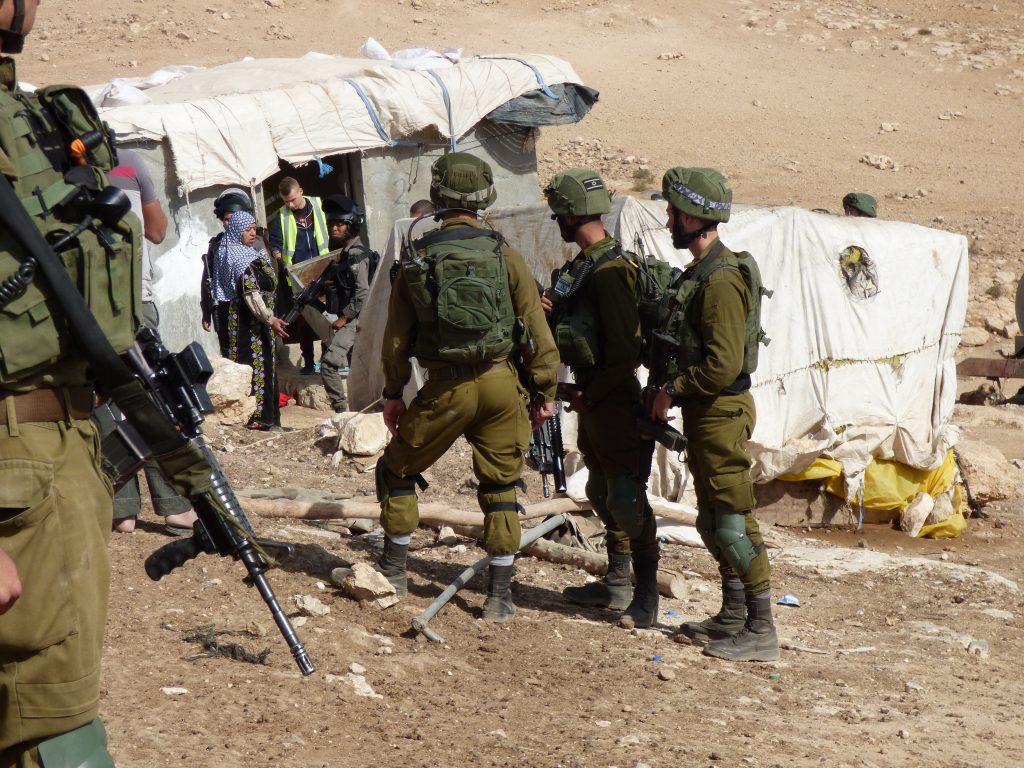
Soldiers surround a house scheduled for demolition in Al Halawah, October 2017. Photo by Operation Dove
We asked about the home demolitions that have become a fact of life in the South Hebron Hills. Paula*, one of the Operation Dove volunteers, who has witnessed many demolitions firsthand, told us:
“It’s not just the moment of demolition that affects the people. Demolitions affect their whole daily life. The demolitions typically happen at 2 or 3am in the morning and it’s very scary for the kids.”
Residents in the village of Susiya often ask Operation Dove’s international volunteers to stay in the village because of the threat of demolition. We were told that the local kids don’t want to put on their pyjamas at bedtime, as they want to be fully clothed in case the army arrives to carry out a home demolition.
Ali, an activist from the nearby village of Tuba, told us: “They don’t make an appointment for the demolition. You never know when they’re going to come.”
Demolition policy pushed forward by Israeli settler organisations
The Israeli colonies in the South Hebron Hills are routinely violent toward local Palestinians. Operation Dove has documented constant harassment by armed settlers against Palestinian shepherds and schoolchildren. At the same time, the settlements are expanding rapidly.
We were told that local Palestinians think that Regavim, a far-right settler organisation, is operating drones in the area to monitor Palestinian construction, then handing information about construction to the Israeli occupation authorities so that they can carry out demolitions.
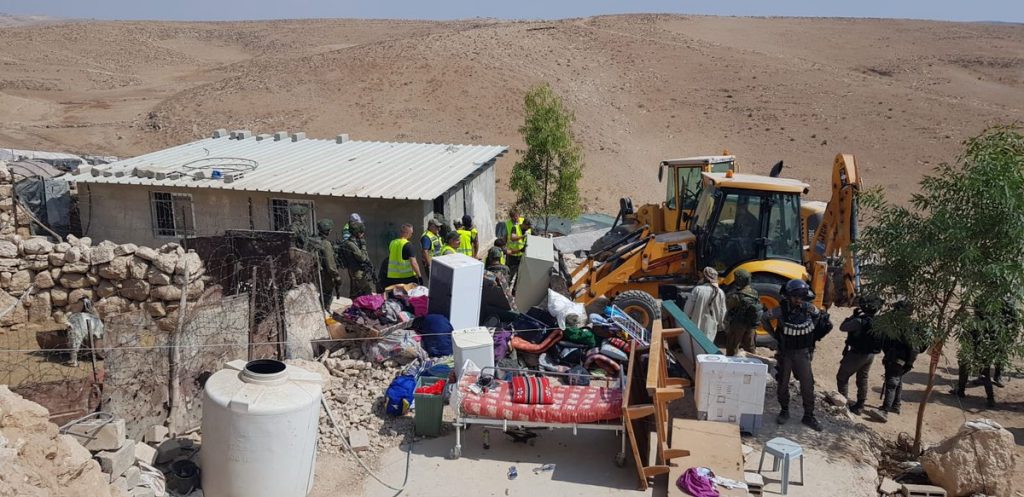
JCB machines demolish a house in Al Halawah, 9th Oct 2018
Popular resistance to evictions
Like the Bedouin residents of Khan al Ahmar, Palestinians in the South Hebron Hills have never stopped resisting the demolitions. The activists tell us that in the late 1990s, the Israeli military expelled over 700 South Hebron Hills residents from their homes, which the military had designated a live-fire zone, known as ‘firing zone 918’. Palestinians had lived in the area, often making homes in caves, since before the occupation of the West Bank.
In response to the forced evictions, Palestinians began a legal battle and formed a Popular Resistance Committee, made up of representatives of all the communities in the South Hebron Hills. The Popular Committee began organising with international and Israeli activists.
As well as fighting the evictions through the courts, local residents, and their Israeli and international supporters, engage in civil disobedience to try to stop the demolitions.
Ali explained that:
“From 2015, the state reacted to people resisting the demolitions by beginning to close off the areas where the demolitions were taking place, and by using more violence against the people. Civilian workers have started to be employed to remove people’s things from the houses because the people refuse to take them out.”
The reclaiming of Sarura
In 2017, activists decided to take their resistance a step further by reoccupying one of the villages which had been forcibly evicted.
Sami Huraini, of Youth of Samud, explained:
“We decided to make a camp in 2017 in a village called Sarura, situated 2km away from At Tuwani. Surura had been evicted in 1997. The people had been forced to leave as a result of harassment by settlers from Havat Ma’on, an illegal outpost.
We were worried that the land would be taken by the settlements of Ma’on and Avigail. The settlers want to connect these two settlements, but the Palestinian villages are in the way of these two settlements from being connected together.”
According to Ali: “We wanted to bring back life to the village.”
Sami continued:
“On 19th May 2017 we went with international activists and Israeli leftists to set up tents in the village. We also set up generators. There are caves in the village, and we started work inside them.
Two days later, the army raided the village and confiscated our tents. After that, we moved to the other side of the village. We stayed there and the army kept coming and confiscating everything we had. They told us that we could do what we wanted in the caves, but not in the firing zone.”
The military came with a JCB bulldozer and confiscated materials which the activists were using to renovate the caves and make them habitable. The activists recently installed a toilet, but they received a demolition order and are expecting the army to demolish it at any moment.
Now the activists are doing shifts, maintaining a 24 hour presence in Sarura. Ali explained: “We try to support the owners of these caves to come back to their land. But the families are still a bit scared to come back because of the harassment.”
The activists have fully renovated one of the Sarura caves, and are working on a second one. They are also planting olive trees.
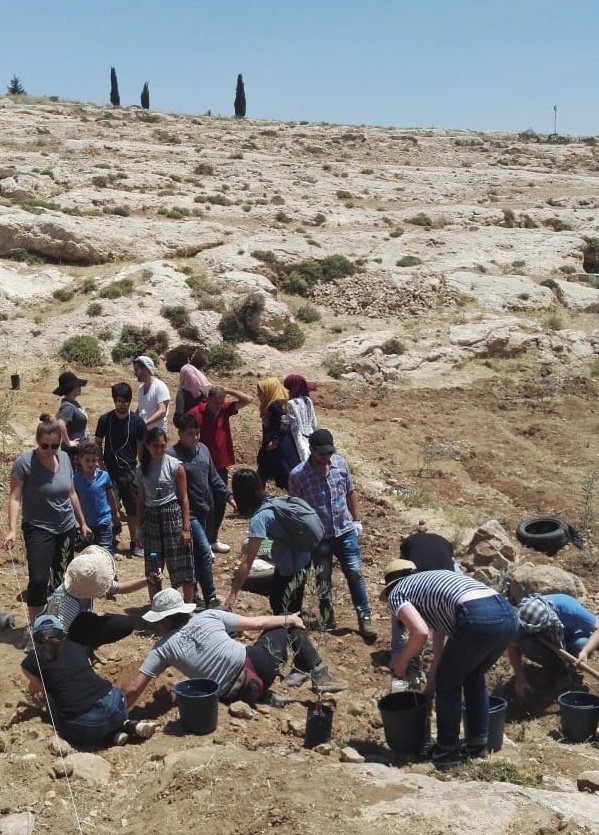
Youth of Samud with Israeli and International Jewish activists plant olive trees and work to restore a cave in Sarura, June 2018. Picture by Operation Dove
Israeli colonists from the settlements of Ma’on and Avigail often come to Sarura during the night to harass the activists, tear down their Palestinian flags and destroy trees. When we met with Sami, his leg was in plaster because settlers had deliberately driven into him with a quad bike.
Sami described what happened after he was attacked in March 2018:
“The police showed up at the same time that the ambulance arrived, but they did nothing at all. It’s clear for us that they are giving the settlers all the protection they need. The settlers are allowed to move around in the middle of the village, and carry a gun if they want to.
“Sometimes the settlers come into the village with the protection of the army. The army throws tear gas and sound bombs at Palestinians to allow the settlers to enter.”
Sami pointed out that the Civil Administration rarely demolishes illegal buildings set up by the settlers:
“To build inside a settlement outpost is illegal, but in Havat Ma’On they’re cutting trees and building new houses. It’s very rare to find a demolition order against them. The army did demolish one settler house outside the outpost. But they’ll rebuild it for sure.
The army and Civil Administration want to keep the settlers happy. It keeps going on and on. They are pretending that there’s justice between settlers and Palestinians, but only one in a thousand illegal outpost houses are demolished.”
Since Palestinians came back to Sarura, the army has arrested many people. According to one Operation Dove volunteer, all of the activists who have been in Sarura have been arrested. Sami told us:
“The army have raided the camp and arrested four or five people, including one who was 14. They took some to the checkpoint at Susya and some to Kiryat Arba for interrogation [both Susya and Kiryat Arba are Israeli settlements].
“They arrested me because Regavim [an Israeli settler organisation] complained about me. I spent one week in prison, then they gave me a fine. They try to make people fearful so they won’t go to Sarura any more.”
The activists are determined to stay in Sarura until the occupation authorities grant the village a master plan, like in At Tuwani. According to Sami:
“People will continue to defend Sarura. Our resistance there is making big trouble for them. They’re getting tired of us, and the army has stopped raiding the village so much. We need to have a lot of strength to carry on.”
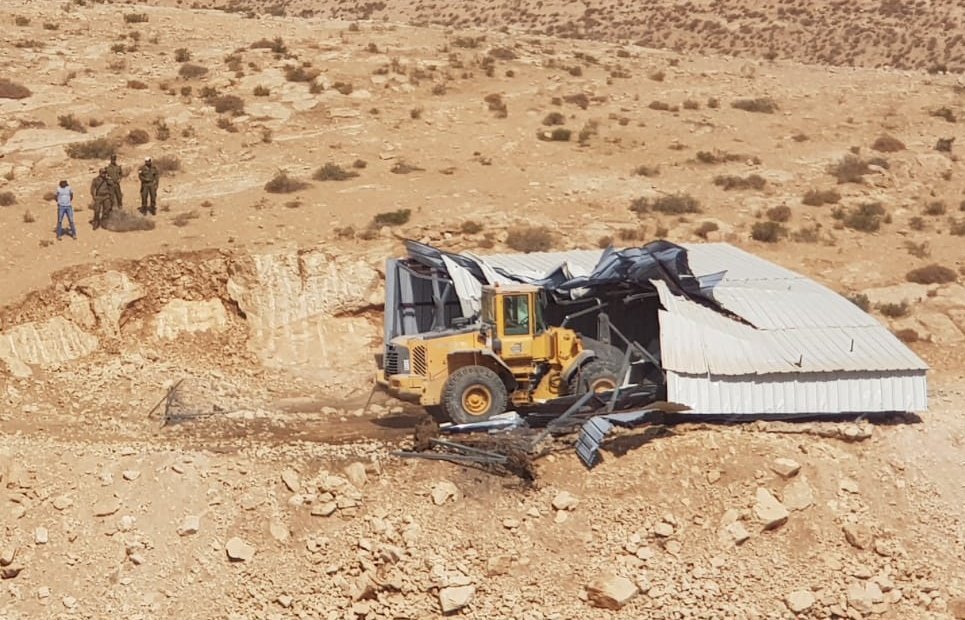
A shelter for animals is demolished in the village of Tuba, July 30th 2018, photo by Operation Dove
International companies ‘cooperating with the occupation’
The demolitions of Palestinian homes in the South Hebron Hills are carried out using equipment manufactured by international companies.
The activists we spoke to confirmed that equipment manufactured by the following companies has been used in the South Hebron Hills:
British firm JCB, Turkish company Hidromek, US multinational Caterpillar, Swedish company Volvo and CNH Industrial (Case), headquartered in the UK (but partly owned by the Italian holding company Exor NV).
As British activists, we are particularly interested in the involvement of UK company JCB. The activists showed us several videos and pictures of JCB equipment in use during home demolitions in the South Hebron Hills area.
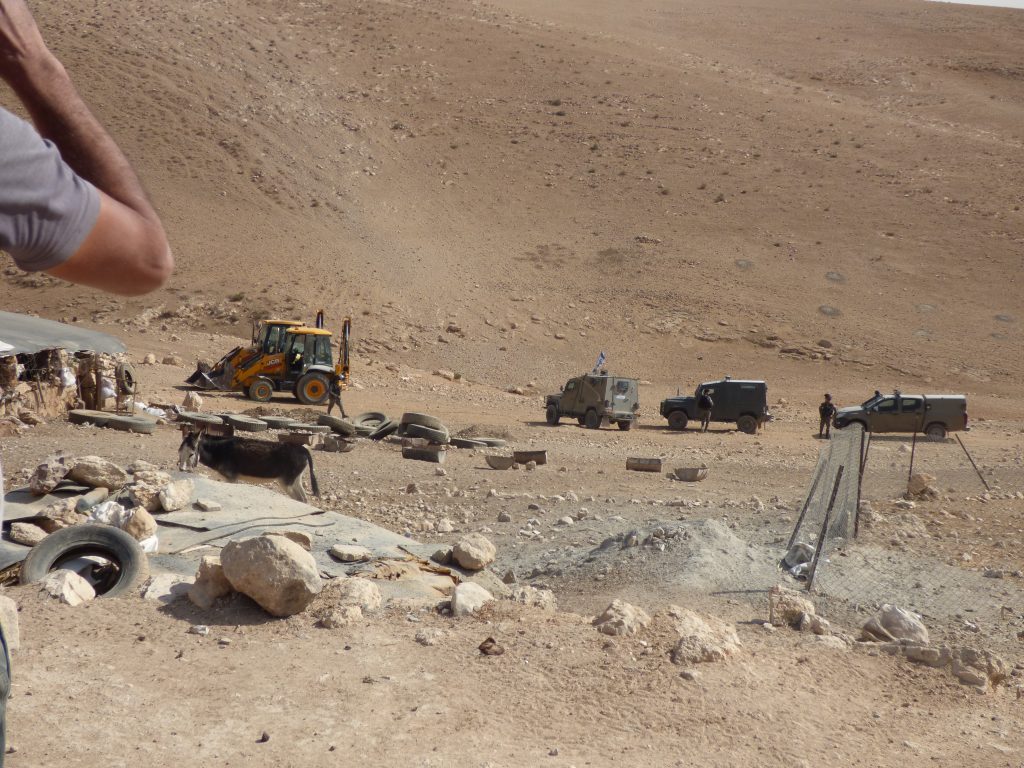
JCB Bulldozers carrying out a home demolition in Al-Hulaweh, October 2017. Photo by Operation Dove

We asked Ali if he thought that the companies supplying the bulldozers share responsibility for the destruction of people’s homes.
“For sure they are responsible,” he replied. “These European companies are cooperating with the occupation.”
To read more about Youth of Samud see their Facebook page
To learn more about how to take action against JCB see here.
*Some of the activists’ names have been changed to protect their identities.
Thanks to Eliza Egret, Amy Hall and Lydia Noon of Shoal Collective for their help in the interviews and editing of this article.
[asp_product id=”6047″]
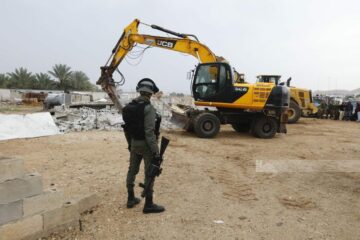
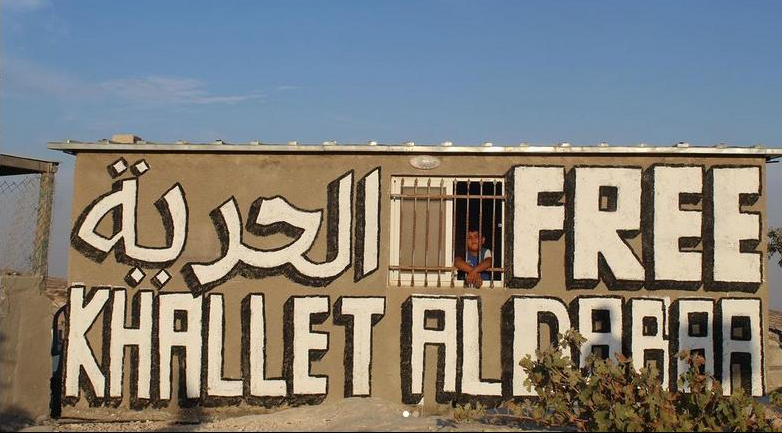
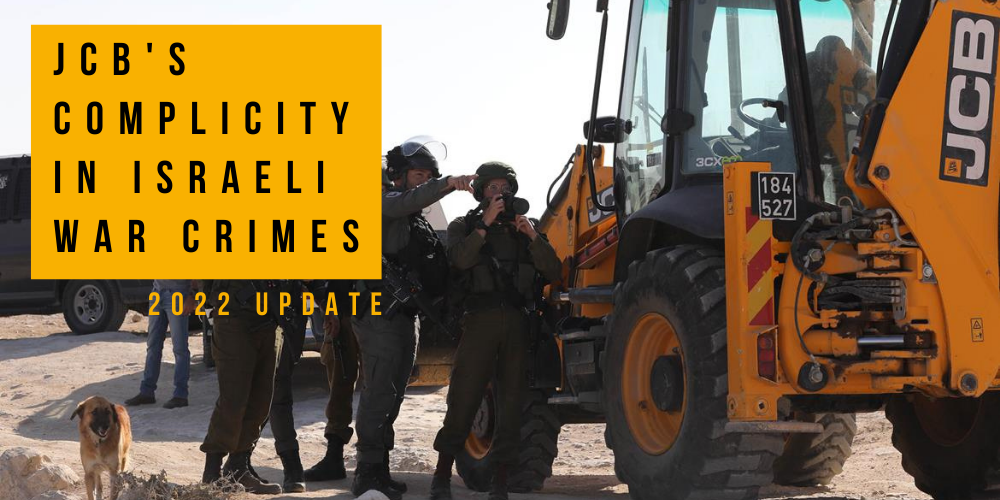
0 Comments